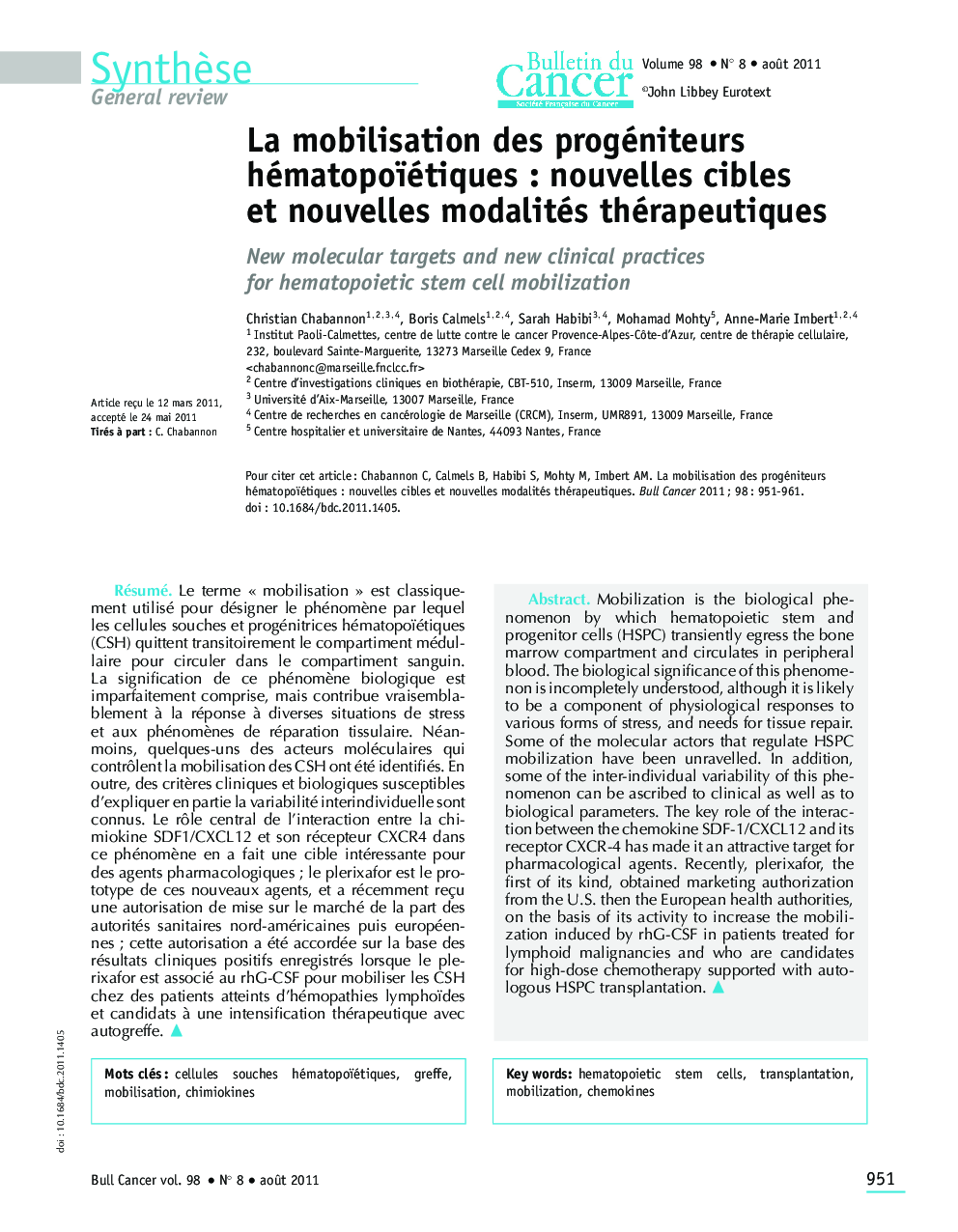| Article ID | Journal | Published Year | Pages | File Type |
|---|---|---|---|---|
| 3979160 | Bulletin du Cancer | 2011 | 11 Pages |
Abstract
Mobilization is the biological phenomenon by which hematopoietic stem and progenitor cells (HSPC) transiently egress the bone marrow compartment and circulates in peripheral blood. The biological significance of this phenomenon is incompletely understood, although it is likely to be a component of physiological responses to various forms of stress, and needs for tissue repair. Some of the molecular actors that regulate HSPC mobilization have been unravelled. In addition, some of the inter-individual variability of this phenomenon can be ascribed to clinical as well as to biological parameters. The key role of the interaction between the chemokine SDF-1/CXCL12 and its receptor CXCR-4 has made it an attractive target for pharmacological agents. Recently, plerixafor, the first of its kind, obtained marketing authorization from the U.S. then the European health authorities, on the basis of its activity to increase the mobilization induced by rhG-CSF in patients treated for lymphoid malignancies and who are candidates for high-dose chemotherapy supported with autologous HSPC transplantation.
Keywords
Related Topics
Health Sciences
Medicine and Dentistry
Oncology
Authors
Christian Chabannon, Boris Calmels, Sarah Habibi, Mohamad Mohty, Anne-Marie Imbert,
